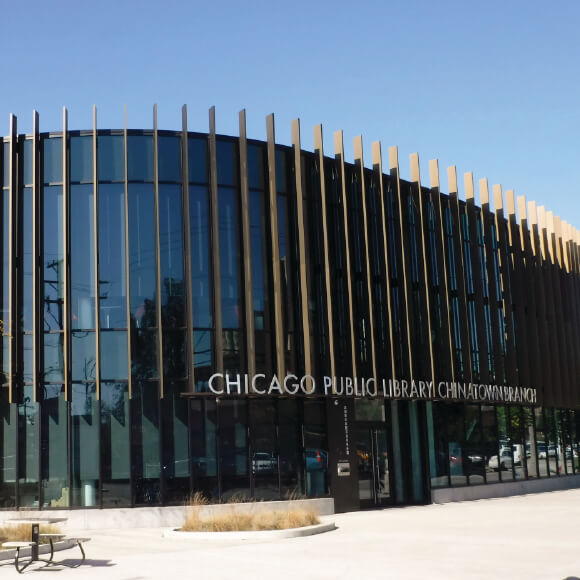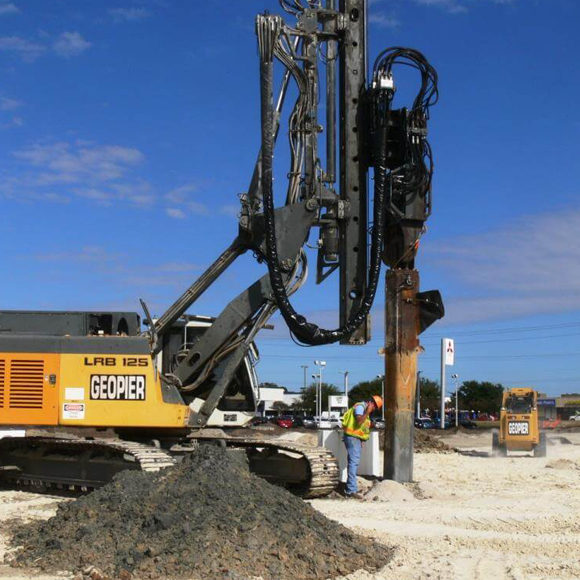
Chicago Public Library Chinatown Branch
Geopier Rampact® system was used to support Chicago’s newest landmark - the Chicago Public Library Chinatown Branch and 2016 AIA/ALA Award Winner
- Owner: Chicago Public Building Commission
- General Contractor: Wight & Company
- Geotechnical Engineer: PSI
- Structural Engineer: Drucker Zajdel Structural Engineers
Construction of the Chicago Public Library Chinatown branch consisted of a two-story structure constructed in the shape of a “rounded triangle” with fins that shade the interior of the building from the sun. Column loads varied between 150 and 300 kips with wall loads of up to 4 kips per linear foot.
The soil conditions consist of 6 to 12 feet of very loose to medium dense sandy gravel and urban fill underlain by a thin layer of loose sand or sandy silt, followed by about 10 feet of stiff clay crust underlain by about 45 feet of soft clay. Below the soft clay, limestone bedrock was encountered.
The original plan of supporting the building on caisson foundations was cost prohibitive. As such, the design team considered building a typical “prototype” rectangular branch library as had been done in many other neighborhoods. Providing a Geopier soil reinforcement solution allowed the building to be supported on conventional spread footings. This provided a significant portion of the cost savings necessary for the team to proceed with the unique architectural design for the building. The building was one of seven winners of the 2016 AIA/ALA Library Building Awards and is a landmark of the Chinatown neighborhood. Approximately 200 Geopier Rampact® piers were installed in 5 days, which was a significant schedule savings versus the deep foundation alternative. The Rammed Aggregate Pier® (RAP) elements were installed to depths of 26 feet below existing grade. The modulus test confirmed the proposed Geopier design would meet the project settlement criteria of 1 inch of total settlement and 1/2 inch of differential settlement. The test measured a deflection of 0.2 inches at 100 percent of the design load, with a RAP modulus of 450 pci (significantly higher than the design modulus of 175 pci).


